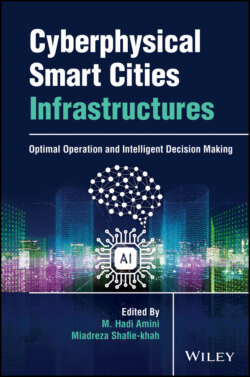Читать книгу Cyberphysical Smart Cities Infrastructures - Группа авторов - Страница 23
2.3.1 Data Capturing
ОглавлениеSmart cities have been engulfed with too much data that requires the management department to control and monitor the cities, but this department is cost and time inefficient. Hopefully, due to domains (features of smart cities), these data, which are grouped automatically into domains, create particular big data for each domain separately. IoT devices used to gather data for healthcare are completely different from the ones that are developed specially for traffic control (i.e. why we need to categorize the data into groups of domains to create certain technical big data for each domain). According to Figure 2.2, we provide six different samples of sensors and IoT devices, such as smart phones, smart cameras, smart thermometers, smart users with sensors, smart cars, and smart houses. The variations of sensors enable a data center to receive different types, ranges, and values of data from objects. Here, we highlight the current upcoming challenges with associate solutions.
Figure 2.2 Smart cities data analytics framework.
Challenges: The process of data gathering in smart cities has been enhanced yet remains challenging due to the lack of enough equipment in every place we aim to monitor and make decisions for that region, like relaying traffic information. No matter our focus, whether in smart healthcare mobility or other areas of interest, IoT devices and other sensors may still fail to capture all data correctly or may miss data entirely due to their limited storage and inefficient time‐scales.
In addition to that, data have proliferated significantly and are produced from heterogeneous sources. Therefore, the types of data vary from video and images to digits or strings and need particular procedures to convert all of the data into single unit measurements. These measurements enable us to run machine learning algorithms and other DL algorithms on the data readily to make optimum decisions.
Solutions: Preprocessing plays a pivotal role in managing missing information and values within the generated dataset. There are some basic and advanced approaches [26] to handle the missing values, and also, there are tools and techniques to select important and relevant features like IFAB [27] using artificial bee colony to get rid of irrelevant features and ensure the genuineness and reproducibility of the results [28].
To handle the heterogeneous problem, data engineering [22] is responsible for managing and analyzing the input data and adding labels to data left unlabeled. This requires experts and time; thus it is not cost and time efficient. Therefore, leveraging big data algorithms helps to tune and analyze the data properly.
